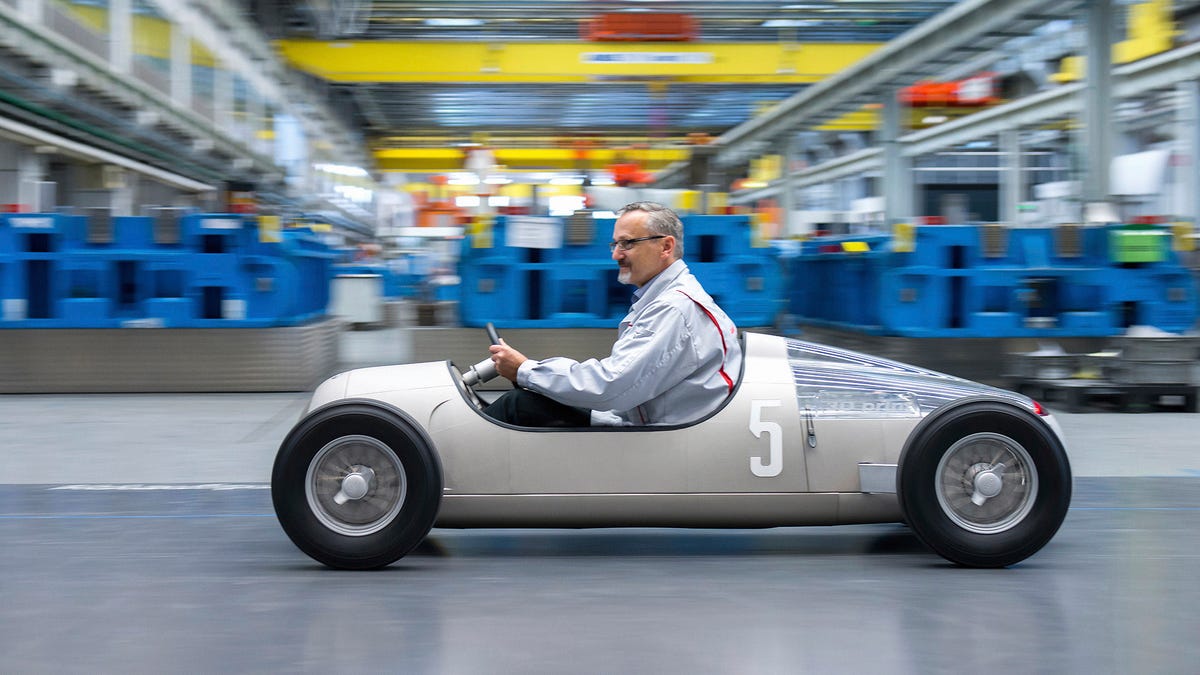Audi uses 3D-printing to build a 1:2-scale Auto Union race car
The company's toolmaking division investigates new technology to reduce waste and complexity while speeding up overall production.
Automakers have not yet fully embraced 3D printing, but Audi seems very interested in implementing this cutting-edge technology, especially as the process moves beyond plastic. Audi's toolmaking division is currently investigating 3D printing of metal objects, and it's built a race car as proof of concept.
Metal 3D printing isn't much different from plastic -- both use the additive process, which means placing layer after layer of material down until the desired shape is created. For metal, a laser melts together layers of metallic powder. The powder's individual grains are no larger than half the diameter of a human hair, which means the printer can create incredibly complex shapes in rather small sizes. It works for both aluminum and steel, which are the chief components of most vehicle chassis.
Audi's toolmaking division is working to utilize these processes in vehicle manufacturing, but it's starting out small -- 1:2 scale, to be exact. The company used metal 3D printing to create the components of a half-sized Auto Union Typ C race car. Ferdinand Porsche designed the car, which used a mid-mounted 16-cylinder engine to secure several Grand Prix victories between 1936 and 1938.
Building scale models is nice and all, but the real benefits will come when the technology is capable of manufacturing full-size vehicle components -- right now, the printer can only construct parts up to 9.5 inches long and 7.9 inches wide. The benefits are already apparent, though -- 3D printing cuts down on waste metal, which boosts cost-effectiveness. It also cuts down on the time required to make parts with complex contours, which can speed up the entire assembly process.
3D-printed cars already exist, albeit using different materials. Local Motors already built a vehicle with a 3D-printed chassis, but it utilizes 80 percent plastic and 20 percent carbon fiber.


